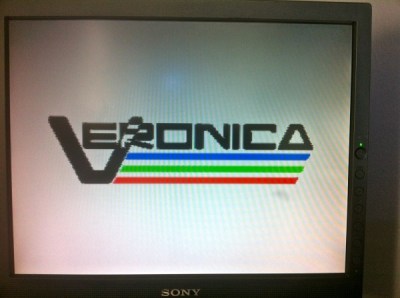Including a live technical demonstration as part of a presentation is a lot like walking a tightrope without a net. Which isn’t to say that we don’t do it — we just keep our fingers crossed and bring our lucky horseshoe. The demo gods have smote [Quinn] a mighty blow, in front of a class at Stanford, no less.

[Quinn]’s scratch-built computer, Veronica, failed to boot in front of a hall of eager students. When the pressure was off, in the comfort of her own lab, [Quinn] got to debugging. You should read her blog post if you’re at all interested in retrocomputing or troubleshooting of low-level hardware bugs. But if you just can’t spare the five minutes for a pleasant read, here’s a spoiler: watch out for flaky card-edge connectors. All’s well that ends well, with a game of pong.
We’ve been following Veronica from her very first clock cycles, so we’re happy to see her back on her feet again. Good job, [Quinn]!
















Next time I would use something more like VME Eurocard connectors. Hand-etched copper boards and surplus card edge sockets don’t hold up very well over time.
Absolutely brilliant work nonetheless, Quinn.
The pin layout (and spacing) of the eurocard connectors makes them harder to use with homemade copper boards than ISA or industrial edge connectors.
Ms. Quinn Dunki,
On behalf of your 6502 DIY machine..
Excellent work!
However.. The excessive support hardware was rather unnecessary.
There are a WHOLE array of IC’s for interfacing peripheral hardware. from back in the day Especially
discrete graphics controllers. Or when you used a micro just for keyboard to PC
communication. You could have gotten away with a UART IC, and a ps/2 keyboard.
Thank you.
Glad to see another chapter in the Veronica sage.
I remember when “reseat cards” was one of the top items in hardware diagnostic checklists. PC manufacturers hadn’t yet figured out how to make reliable edge connections either. Given enough computers to maintain (I was in charge of ~75 at the time), it had to be done on one or another with some regularity.
Pull each card in turn. Inspect the copper fingers while it’s out. Looks tarnished? Rub with #2 pencil eraser, blow away rubber bits. Reinsert. Enjoy reputation of being a miracle worker.
There were some “miracle solutions” supposed to solve this more permanently, like Stabilant 22a. Supposedly a liquid semiconductor, which would suddenly start conducting when the voltage-per-mil of distance exceeded some threshold. So at logic voltages, the conduction distance was short – enough to bridge a faulty contact, but not bridge adjacent connections – and you could paint it on the entire card edge. Some swore by it, and I guess some still do, as I see it’s still sold after all these decades. For me, it always made things worse.
Those edge connectors from back in the 8-bit ISA bus (XT) era were even a big problem back then. The 16-bit EISA bus connectors (AT) were much the same.
Early edge connectors came from larger industrial scale main frame computers where they worked well in a low traffic (low vibration) dust free environment.
Unfortunately when they were introduced to the domestic environment with the likes of the PC Junior and IBM XT (and clones) they became a big problem from the combination of dust and vibration.
The shape of the pins in these old connectors will cause dust to *gravitate* to the location where they are best able to cause failure especially if the socket is facing upwards.
Later edge connectors that are used in domestic environments like PCI had the pins redesigned with what was learnt from the early IBM XT days.
I am intending (cough cough) to make something very similar and I have bought 20 of 50 pin Right angle locking pin headers and 20 of 80 pin dual row header sockets. They are much more reliable. I just have to work out how to break the locking tabs off.
I should still be able to use this with single sided boards if I use straight links instead of a second layer.
Also standard pin headers are really good for wire wrap if you want to prototype that way.
Well done. I have been enviously watching your project for some time.
I’m very impressed by this.Inspiring.
It happens. Had my “it’s never broken!” S-100 box fail to boot in front of a class at the Vintage Computer Festival one year. Took all day of looking for actual problems to realize an address switch on the ROM board had gotten knocked in transit.
I’d say tempt them, but always have a backup (e.g. a video demo). Live demos are pretty impressive to watch as an audience member and it’s completely understandable that things go wrong. So having a backup not only shows you are prepared, you will get a lot more sympathy from the audience and they still get a similar experience.